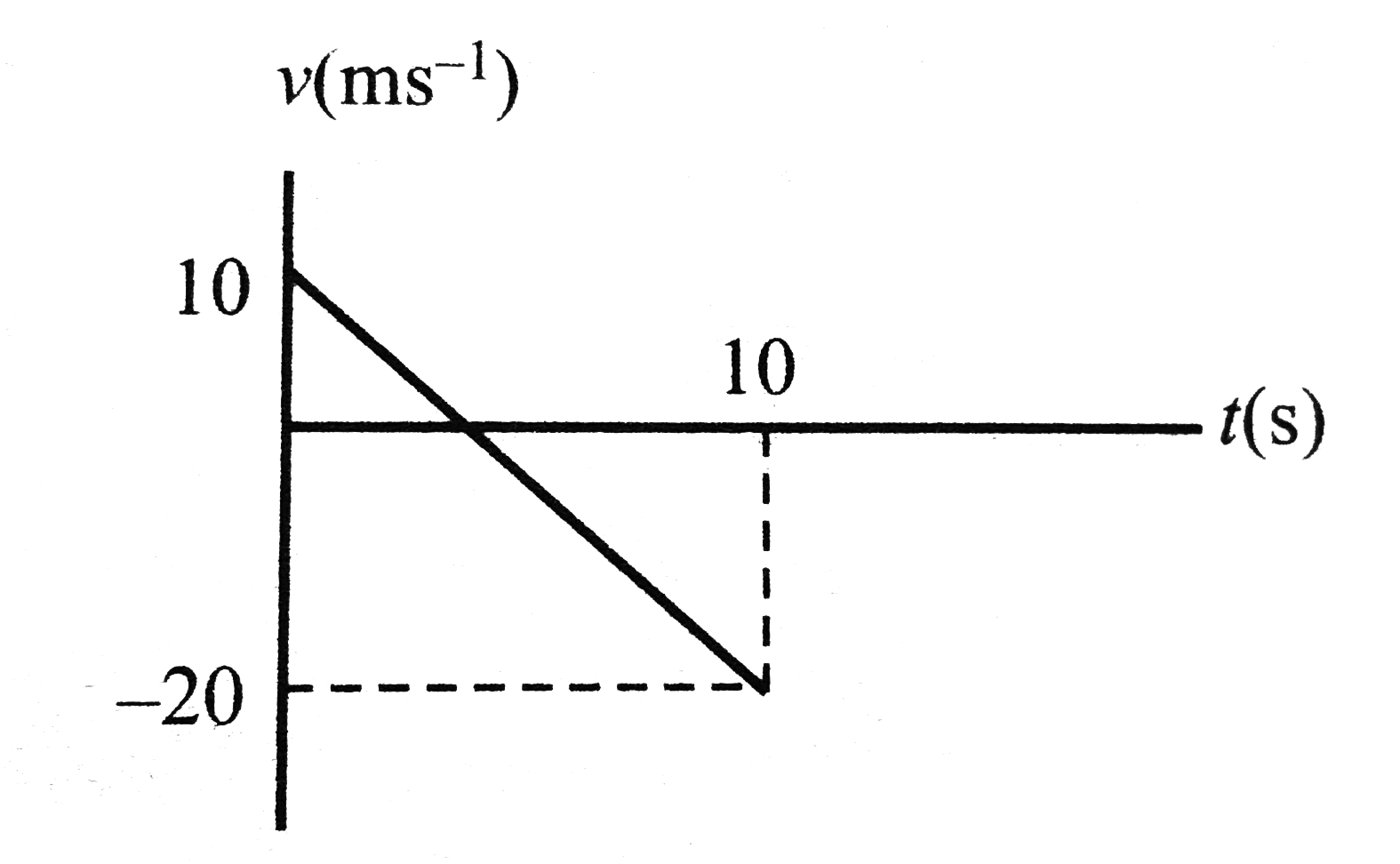A particle of mass m moves with a variable velocity v, which changes with distance covered x along a straight line as v=k√x, where k is a positive constant. The work done by all the forces acting on the particle, during the first t seconds is
mk4t24
mk2t2
ml4t28
mk2t24
The correct Answer is:C
To find the work done by all the forces acting on a particle of mass m moving with a variable velocity v=k√x, we can follow these steps:
Step 1: Relate velocity to distance
Given the velocity v is defined as:
v=k√x
We can express this in terms of the differential relationship:
v=dxdt
Thus, we have:
dxdt=k√x
Step 2: Rearranging the equation
Rearranging gives:
dx√x=kdt
Step 3: Integrating both sides
Now, we integrate both sides. The left side requires a substitution:
∫dx√x=∫kdt
The integral of the left side is:
2√x=kt+C
where C is the constant of integration.
Step 4: Determine the constant of integration
At t=0, x=0:
2√0=k(0)+C⟹C=0
Thus, we have:
2√x=kt
Step 5: Solve for x
Squaring both sides gives:
4x=k2t2⟹x=k2t24
Step 6: Substitute back to find velocity
Now, substituting x back into the equation for v:
v=k√x=k√k2t24=k2t2
Step 7: Calculate the change in kinetic energy
The work done W is equal to the change in kinetic energy. The initial kinetic energy KEi is zero (since the initial velocity is zero):
KEi=0
The final kinetic energy KEf is given by:
KEf=12mv2=12m(k2t2)2
Calculating this:
KEf=12m⋅k4t24=mk4t28
Step 8: Work done
Thus, the work done W is:
W=KEf−KEi=mk4t28−0=mk4t28
Final Answer
The work done by all the forces acting on the particle during the first t seconds is:
W=mk4t28
---
Given the velocity v is defined as:
v=k√x
We can express this in terms of the differential relationship:
v=dxdt
Thus, we have:
dxdt=k√x
Rearranging gives:
dx√x=kdt
Now, we integrate both sides. The left side requires a substitution:
∫dx√x=∫kdt
The integral of the left side is:
2√x=kt+C
where C is the constant of integration.
At t=0, x=0:
2√0=k(0)+C⟹C=0
Thus, we have:
2√x=kt
Squaring both sides gives:
4x=k2t2⟹x=k2t24
Now, substituting x back into the equation for v:
v=k√x=k√k2t24=k2t2
The work done W is equal to the change in kinetic energy. The initial kinetic energy KEi is zero (since the initial velocity is zero):
KEi=0
The final kinetic energy KEf is given by:
KEf=12mv2=12m(k2t2)2
Calculating this:
KEf=12m⋅k4t24=mk4t28
Thus, the work done W is:
W=KEf−KEi=mk4t28−0=mk4t28
The work done by all the forces acting on the particle during the first t seconds is:
W=mk4t28
Topper's Solved these Questions
- WORK, ENERGY AND POWERBOOK - AAKASH INSTITUTE ENGLISHCHAPTER - WORK, ENERGY AND POWEREXERCISE - Assignment (SECTION - C)
80 Videos
- WORK, ENERGY AND POWERBOOK - AAKASH INSTITUTE ENGLISHCHAPTER - WORK, ENERGY AND POWEREXERCISE - Assignment (SECTION - D)
13 Videos
- WORK, ENERGY AND POWERBOOK - AAKASH INSTITUTE ENGLISHCHAPTER - WORK, ENERGY AND POWEREXERCISE - Assignment (SECTION - A)
64 Videos
- WAVESBOOK - AAKASH INSTITUTE ENGLISHCHAPTER - WAVESEXERCISE - ASSIGNMENT ( SECTION-D ( Assertion - Reason Type Questions ))
12 Videos
Similar Questions
A particle of mass m moves along a circular path of radius r with a centripetal acceleration an changing with time t as an=kt2, where k is a positive constant. The average power developed by all the forces acting on the particle during the first t0 seconds is
View SolutionThe velocity (v) of a pariticle of mass m moving along x-axls is given by v=b√x, where b is a constant. Find work done by the force acting on the particle during its motion from x=0 to x=4m.
View SolutionA particle of mass m moves on a straight line with its velocity varying with the distance travelled according to the equation v=a√x, where a is a constant. Find the total work done by all the forces during a displacement from x=0→x=d.
View SolutionA particle of mass m moves on a straight line with its velocity varying with the distance travelled according to the equation v=a√x, where a is a constant. Find the total work done by all the forces during a displacement from x=0→x=d.
View SolutionA particle of mass m moves on a straight line with its velocity varying with the distance travelled according to the equation v=a√x, wher ea is a constant. Find the total work done by all the forces during a displacement from x=0→x=d.
View SolutionA particle of mass 2kg travels along a straight line with velocity v=a√x, where a is a constant. The work done by net force during the displacement of particle from x=0 to x=4m is
View SolutionA locomotive of mass m starts moving so that its velocity varies according to the law v=a√s, where a is a constant, and s is the distance covered. Find the total work performed by all the forces which are acting on the locomotive during the first t seconds after the beginning of motion.
View SolutionThe velocity (v) of a particle of mass m moving along x-axis is given by v=α√x, where α is a constant. Find work done by force acting on particle during its motion from x=0 to x=2m :-
View SolutionThe velocity-time graph of a particle moving in a straight line is shown in figure. The mass of the particle is 2kg. Work done by all the forces acting on the particle in time interval between t=0 to t=10s is

View SolutionThe velocity of a particle along a straight line increases according to the linear law v=v0+kx, where k is a constant. Then
View Solution
